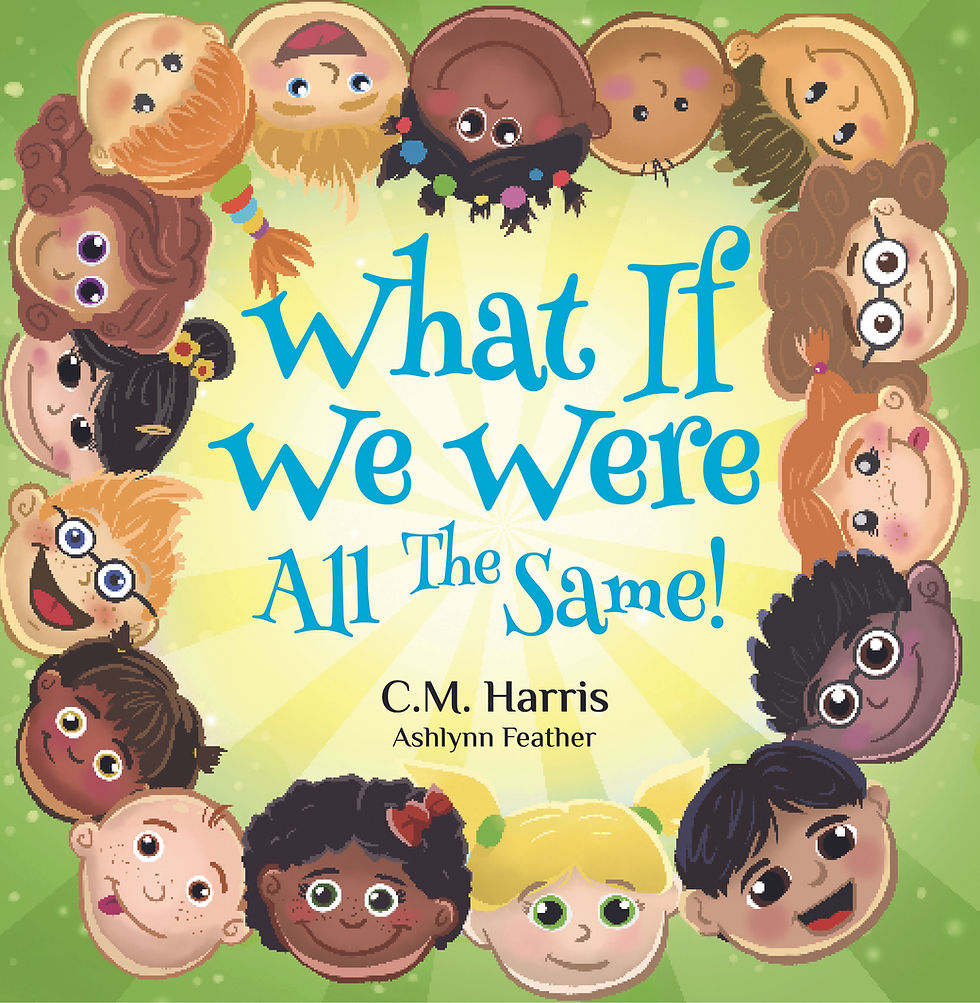Case Study: How Diverse Stories Improve Student Engagement in the Classroom
- C.M. Harris
- Oct 18
- 2 min read
When children open a book, they’re not just reading words on a page—they’re stepping into a world that tells them who matters, who belongs, and what’s possible. For years, classrooms across the country have worked to make their libraries more inclusive, and the results have been nothing short of transformative.

This case study explores how diverse children’s books—like What If We Were All The Same! by C.M. Harris—spark curiosity, compassion, and connection among students of all backgrounds.
Background: Why Representation Matters
Studies show that when students see themselves reflected in literature, their motivation to read increases by up to 40%(Source: Scholastic Kids & Family Reading Report). Representation gives students a sense of belonging—it tells them their story has value.
But diverse books don’t only empower students who see themselves in the pages—they also help classmates build empathy and understanding for people who may be different from them. When teachers include stories that reflect race, disability, language, and family diversity, reading becomes more than an academic task—it becomes a mirror and a window into the world.
Case Study: “What If We Were All The Same!” in Elementary Classrooms
When What If We Were All The Same! was introduced in several K-3 classrooms across California, teachers noticed an immediate shift. Students leaned in. Discussions deepened.
Observation Highlights:
Increased participation: Students who were normally quiet began sharing their own experiences, connecting personally with the story’s message of acceptance.
Improved reading comprehension: When children relate to the characters, they retain more information and engage with the story’s themes on a deeper level.
Empathy in action: Teachers observed more inclusive behavior on the playground—students were more mindful of including peers with differences.
One teacher noted,
“After reading What If We Were All The Same!, my students started noticing how we’re all different in special ways. They began complimenting one another’s unique talents instead of teasing. That shift carried far beyond storytime.”
💡 The SEL Connection
Diverse stories are powerful tools for Social and Emotional Learning (SEL). They naturally reinforce key competencies such as empathy, self-awareness, and relationship-building.
When children read about characters who look, move, or communicate differently, it normalizes difference and fosters kindness. Books like What If We Were All The Same! help guide conversations about fairness, inclusion, and respect in ways children can understand—and remember.
📈 Results: From Reading to Real Change
In follow-up classroom surveys, 87% of teachers reported higher student enthusiasm during storytime when using inclusive literature.
Students also used vocabulary from the book in their daily interactions—words like kindness, same, and friend—showing that the message stayed with them long after the reading was over.
❤️ The Takeaway
Diverse stories do more than decorate classroom bookshelves—they shape compassionate communities.
When we give children the chance to see, hear, and understand one another through books, we plant the seeds for a more empathetic generation.
As What If We Were All The Same! continues to find its way into schools across the nation, its message reminds us all of a simple truth: the more stories we share, the stronger our classrooms—and our world—become.
Discover books that make a difference at PurpleDiamondPress.com.
Bring representation, kindness, and joy to your students’ next storytime.
To learn more about the What If We Were series, check out https://whatifwewereofficial.com







Comments